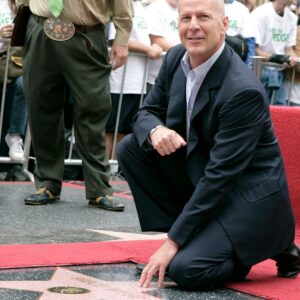Tina Turner, the legendary “Queen of Rock ‘n’ Roll,” left an indelible mark on the music industry with her powerful voice, electrifying performances, and undeniable presence. However, beyond the surface of her musical success lies a deeper story of rebellion, resilience, and resistance. Turner’s music and image became powerful symbols of defiance, not only reflecting her personal battles but also resonating with broader societal struggles. Her journey from hardship to global stardom encapsulates the spirit of rebellion, serving as a beacon of hope and empowerment for generations of fans and fellow artists alike.
Early Career: Breaking Free from Personal and Professional Constraints
Tina Turner’s early career was deeply intertwined with her tumultuous relationship with Ike Turner, who played a significant role in shaping her as an artist. Together, they achieved significant success, with hits such as “A Fool in Love” and “Proud Mary.” Yet behind the scenes, their relationship was marked by emotional and physical abuse, control, and repression. Turner’s rebellion against these constraints can be seen in the music she created during this period, as well as in her eventual decision to leave Ike and reclaim her independence.
One of the most powerful symbols of Turner’s early rebellion is the song “River Deep – Mountain High.” Produced by Phil Spector in 1966, this track was a departure from the R&B sound that defined much of Turner’s work with Ike. With its grand orchestration and soaring vocals, “River Deep – Mountain High” showcased Turner’s potential as a solo artist, breaking free from the musical and emotional constraints imposed by her partnership with Ike. Although the song initially underperformed in the United States, it became a hit in Europe and is now recognized as a classic. The song’s raw emotion and powerful delivery reflect Turner’s internal struggle and her desire for freedom, both personally and professionally.
Another track that encapsulates Turner’s rebellion during this period is “Nutbush City Limits.” Written by Turner herself, the song is a reflection on her humble beginnings in Nutbush, Tennessee. The lyrics paint a picture of a small, rural town with strict societal norms and limited opportunities. In many ways, “Nutbush City Limits” can be seen as a metaphor for Turner’s own life—growing up in a confined environment and eventually breaking free to pursue her dreams. The song’s rebellious energy is palpable, with Turner’s gritty vocals and driving rhythm capturing the spirit of defiance that would come to define her later work.
Turner’s eventual departure from Ike in 1976 marked a turning point in her life and career. After years of enduring abuse and control, she made the courageous decision to leave her marriage and professional partnership, despite the financial and personal risks. This act of rebellion was a real-life manifestation of the themes she had been exploring in her music for years. Turner’s fight to reclaim her independence and identity became a powerful narrative that resonated with fans and solidified her status as a symbol of strength and resilience.
Embracing Rebellion in the 1980s: Reinvention as a Solo Artist
The 1980s marked a pivotal moment in Tina Turner’s career, as she successfully reinvented herself as a solo artist and fully embraced the spirit of rebellion that had been simmering beneath the surface for years. Her 1984 album Private Dancer was a triumphant return to the music scene and a statement of independence and empowerment. The album’s success catapulted Turner to new heights of fame and solidified her status as one of the most iconic performers in the world.
The title track, “Private Dancer,” is a haunting commentary on the exploitation of women in the entertainment industry. The lyrics, written by Mark Knopfler of Dire Straits, tell the story of a woman who performs for money, detached from her emotions and disconnected from her true self. Turner’s delivery of the song is both vulnerable and defiant, embodying the internal conflict faced by many women in a world that often commodifies their bodies and talents. The song’s melancholy tone and reflective lyrics serve as a stark contrast to the high-energy rock anthems that Turner would later become known for, yet it remains a powerful symbol of rebellion against the dehumanizing aspects of the entertainment industry.
Another standout track from Private Dancer is “What’s Love Got to Do with It,” which became one of Turner’s biggest hits and earned her multiple Grammy Awards. The song’s lyrics challenge traditional notions of love and relationships, presenting a more cynical and self-assured perspective. Turner’s delivery is confident and unapologetic, with a rebellious edge that rejects societal expectations of romantic relationships. The song became an anthem for empowerment, particularly for women who were seeking to reclaim their autonomy and reject the notion that love and emotional dependence were necessary for fulfillment.
Turner’s embrace of rock music during this period was, in itself, an act of rebellion. As a Black woman in the music industry, she defied the expectations and limitations often placed on artists of her background. Rock music, which had traditionally been dominated by white male performers, became a vehicle for Turner to express her power and defiance. Her performances were filled with raw energy, passion, and a sense of liberation that resonated with audiences across racial and cultural boundaries. Turner’s ability to transcend genre and break down barriers in the music industry is a testament to her rebellious spirit and her refusal to be confined by societal norms.
Imagery: The Rebel Persona
In addition to her music, Tina Turner’s visual imagery played a crucial role in shaping her rebellious persona. Her fashion choices, stage presence, and overall aesthetic were bold, unapologetic, and fiercely independent. Turner’s iconic look—featuring leather, fringe, and a fearless attitude—became synonymous with rebellion and strength. Her image was a reflection of her inner resilience and determination to defy expectations and forge her own path.
One of the most recognizable aspects of Turner’s image was her untamed hair, which became a symbol of her refusal to conform to traditional beauty standards. In an industry that often prioritized polished and controlled appearances, Turner’s wild hair represented her desire to break free from constraints and embrace her natural self. This rejection of societal norms extended to her fashion choices as well. Turner frequently wore outfits that were edgy, unconventional, and provocative, challenging the expectations of how female performers should present themselves on stage. Her fashion choices were not just about making a statement—they were a reflection of her rebellious spirit and her refusal to be defined by anyone else’s standards.
Turner’s on-stage performances were equally rebellious. She exuded a sense of confidence, power, and fearlessness that captivated audiences and set her apart from her peers. Her stage presence was dynamic and intense, with every movement and gesture conveying a sense of defiance and liberation. Turner was not just performing songs—she was embodying the spirit of rebellion in every aspect of her performance. This made her a symbol of strength and resilience for fans who saw in her the courage to defy the odds and overcome adversity.
The visual imagery of rebellion extended beyond Turner’s personal style and stage presence. Her music videos, album covers, and promotional materials all contributed to the creation of a larger-than-life persona that resonated with fans around the world. Turner’s image was carefully crafted to reflect her journey of empowerment and liberation, and it became a powerful tool for communicating the themes of rebellion that were central to her music.
Rebellion as Empowerment
For Tina Turner, rebellion was not just about breaking free from personal constraints—it was also about empowering others to do the same. Throughout her career, Turner’s music served as a source of inspiration and empowerment for her listeners. Her songs often carried messages of resilience, self-respect, and the courage to stand up against oppression, whether in relationships, society, or the music industry.
One of the most powerful examples of rebellion as empowerment in Turner’s music is the song “Better Be Good to Me.” Released as a single from the Private Dancer album, the song is a declaration of self-worth and a demand for respect. Turner’s delivery is fiery and assertive, with lyrics that convey a sense of strength and independence. The song became an anthem for those who were seeking to reclaim their power and reject toxic relationships. It resonated with listeners who had experienced similar struggles and found solace in Turner’s message of empowerment.
Another track that embodies the theme of rebellion as empowerment is “We Don’t Need Another Hero,” which was featured on the soundtrack for the film Mad Max Beyond Thunderdome. The song’s lyrics speak to the idea of rejecting false leaders and finding strength within oneself. Turner’s powerful vocals and the anthemic chorus make the song a rallying cry for those who are seeking to break free from oppressive systems and take control of their own destinies. The song’s message of self-reliance and empowerment resonated with audiences, and it became another example of Turner’s ability to use rebellion as a tool for inspiring change.
Turner’s music often encouraged her listeners to challenge societal norms and reject the limitations that were placed on them. Whether she was singing about personal relationships, societal expectations, or the entertainment industry, Turner’s message was clear: rebellion was a path to empowerment and liberation. Her music became a source of strength for those who were seeking to break free from unhealthy situations and assert their independence.
Legacy: A Rebel’s Influence on Music and Culture
Tina Turner’s legacy as a rebel transcends her music. Her story of survival, reinvention, and empowerment has had a profound impact on the music industry and popular culture as a whole. Turner’s influence can be seen in the countless artists who have followed in her footsteps, using their platforms to challenge societal norms and assert their independence. She paved the way for other women in the music industry to assert their autonomy and resist the pressures to conform to traditional expectations.
One of the most significant aspects of Turner’s legacy is her role in breaking down barriers for Black female artists in the rock and roll genre. By embracing rock music and defying genre limitations, Turner opened doors for future generations of artists who sought to cross racial and cultural boundaries in their music. Her influence can be seen in the work of artists like Beyoncé, who have used their music to challenge societal norms and promote empowerment. Turner’s ability to transcend genre and break down barriers has made her a trailblazer in the music industry and a symbol of rebellion for future generations.
Turner’s legacy also extends to the broader cultural impact of her story. Her journey of survival and reinvention has resonated with fans around the world, inspiring movements for personal and social change. Her music continues to be a source of empowerment for those who are seeking to break free from oppressive systems and reclaim their autonomy. Turner’s story serves as a reminder that rebellion is not just about defying authority—it is about finding the strength to stand up for oneself and pursue a path of liberation.
Conclusion
Tina Turner’s rebellious spirit is not just a theme in her music—it is the foundation of her life’s narrative. Through her lyrics, performances, and visual imagery, Turner used rebellion as a symbol of defiance, empowerment, and liberation. Her music speaks to the universal struggle for freedom, making her one of the most enduring symbols of resistance in the history of rock ‘n’ roll. Turner’s legacy as a rebel continues to inspire and empower future generations, ensuring that her spirit of defiance will live on for years to come.





